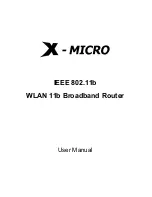
debug pagp
To enable debugging of Port Aggregation Protocol (PAgP) activity, use the
debug pagp
command in privileged
EXEC mode. To disable PAgP debugging, use the
no
form of this command.
debug pagp
[
all | dual-active | event | fsm | misc | packet
]
no debug pagp
[
all | dual-active | event | fsm | misc | packet
]
Syntax Description
(Optional) Displays all PAgP debug messages.
all
(Optional) Displays dual-active detection messages.
dual-active
(Optional) Displays PAgP event debug messages.
event
(Optional) Displays messages about changes within the
PAgP finite state machine.
fsm
(Optional) Displays miscellaneous PAgP debug messages.
misc
(Optional) Displays the receiving and transmitting PAgP
control packets.
packet
Command Default
Debugging is disabled.
Command Modes
Privileged EXEC
Command History
Modification
Release
This command was introduced.
Cisco IOS XE 3.2SE
Usage Guidelines
The
undebug pagp
command is the same as the
no debug pagp
command.
When you enable debugging on a stack, it is enabled only on the active controller. To enable debugging on
the standby controller, start a session from the active controller by using the
session switch-number
command
in privileged EXEC mode. Enter the
debug
command at the command-line prompt of the standby controller.
To enable debugging on the standby controller without first starting a session on the active controller, use the
remote command switch-number LINE
command in privileged EXEC mode.
Examples
This example shows how to display all PAgP debug messages:
Controller#
debug pagp all
Layer 2/3 Command Reference, Cisco IOS XE Release 3E (Cisco WLC 5700 Series)
OL-32323-01
23
Layer 2/3 Commands
debug pagp
















































